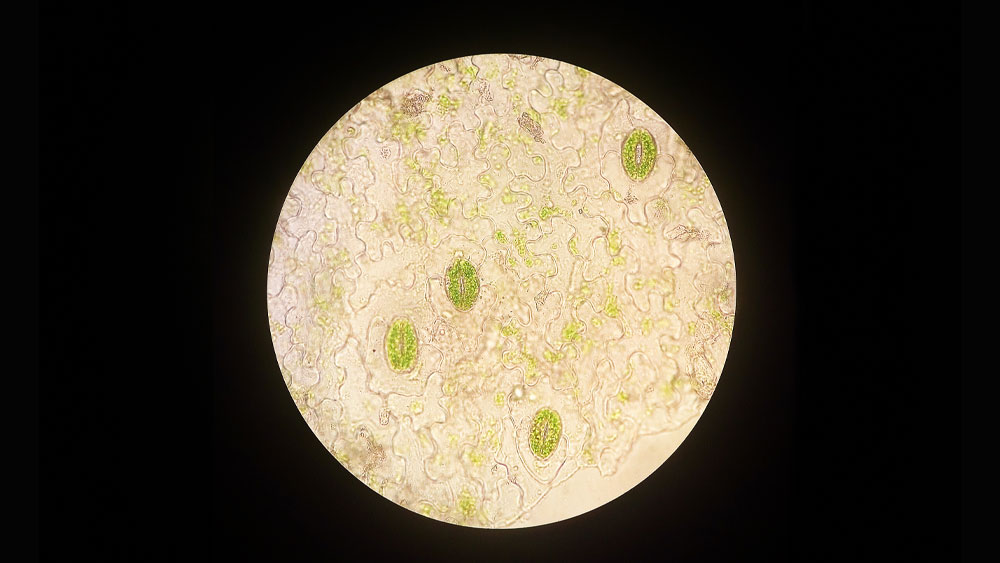Much has been written regarding the critical importance of photosynthesis and how utterly complex this near-universal biochemical process is.1,2 Photosynthesis is the production of life energy from light energy and is still not completely understood: “It’s perhaps the most important biochemical process on Earth and scientists don’t yet fully understand how it works.”3
The amazing process of photosynthesis occurs within tiny structures, or organelles, called chloroplasts found within cells of plants and certain algae.
Chloroplasts contain a chemical called chlorophyll—a major light-trapping pigment. The Lord Jesus designed the photosynthetic process to operate in two phases:
1. The light-trapping stage (the light phase) that produces ATP (energy) and NADP (an electron carrier).
2. The light-independent stage (the so called dark phase) that produces sugar (via PGAL) and life-giving oxygen.
Chloroplasts are extremely complex, and, according to 20 scientists, their operation is baffling: “Despite its importance, the mechanisms of chloroplast function and regulation are still not well understood.”4
Research continues. Biologists have recently “mapped the locations of 1,034 proteins inside the chloroplast of the unicellular green alga Chlamydomonas. This map is a spatial atlas of the chloroplast proteome—all of the proteins that the organism can produce.”5
Such mapping has revealed “punctate [surface covered with small holes] structures and spatial organization of biosynthetic pathways.”4
As is always the case when studying the details of God’s creation, scientists continue to discover novel elements of the chloroplast adding more layers of complexity to this important organelle.
The researchers also identified new components of known chloroplast structures such as the chloroplast envelope, its DNA-protein complexes, fat storage microcompartments, and protein bodies involved in capturing carbon dioxide from the atmosphere.5
The team identified these new components by investigating their interaction with known proteins. They found many proteins that resided in both the chloroplast and other cellular structures, suggesting new function and communication between those structures.5
In addition, Wang et al. have uncovered “spatial organization of biosynthetic pathways” in their research, a commendable effort. Indeed, there is nothing simple regarding metabolic or biosynthetic pathways. Creationists see such pathways as clear evidence of design by the Creator.6
But evolutionists maintain these complex energy and enzyme-driven pathways somehow evolved long ago: “...the emergence of the pathways that now comprise core and central metabolism, or even intermediate metabolism, is particularly enigmatic.”7
A recent university zoology text by five evolutionists states, “The numerous enzymes of cellular metabolism appeared when cells started to utilize proteins for catalytic functions.”8 Enzymes “appeared”? How, exactly? After all, two evolutionists stated in their text Evolution, “How protein enzymes evolved is perhaps the greatest unsolved problem.”9
Creationists embrace detailed scientific research and investigation of God’s living creation. They maintain that God created plants on Day 3 of creation with all of their structures (e.g. chloroplasts) and metabolic processes complete and fully functioning.
References
- Thomas, B. Photosynthesis Uses Quantum Physics. Creation Science Update. Posted on ICR.org June 25, 2012, accessed October 9, 2023.
- Tomkins, J. Design Principles Confer Optimal Light Harvesting in Plants. Creation Science Update. Posted on ICR.org July 13, 2020, accessed October 9, 2023.
- Deep within spinach leaves, vibrations enhance efficiency of photosynthesis. Michigan News. Posted on unmich.edu on July 13, 2014, accessed October 9, 2023.
- Wang, L. et al. 2023. A chloroplast protein atlas reveals punctate structures and spatial organization of biosynthetic pathways. Cell. V 186, issue 16, 3499-3518.
- Scientists build a spatial atlas of the chloroplast proteome, the home of photosynthesis. US Department of Energy via phys.org. Posted on phys.org August 29, 2023, accessed October 10, 2023.
- Sherwin, F. 2020. Metabolic Pathways to God. Acts & Facts. 49 (3).
- Noda-Garcia, et al. 2018. Metabolite-enzyme coevolution. Annual Review of Biochemistry. V 87, 189.
- Hickman, et al. 2020. Zoology 18th edition. New York, NY: McGraw Hill. 30.
- Futuyma, D. & M. Kirkpatrick. 2017. Evolution. 4th edition. Sunderland, MA: Sinauer. 437.
* Dr. Sherwin is science news writer at the Institute for Creation Research. He earned an M.A. in zoology from the University of Northern Colorado and received an Honorary Doctorate of Science from Pensacola Christian College.














